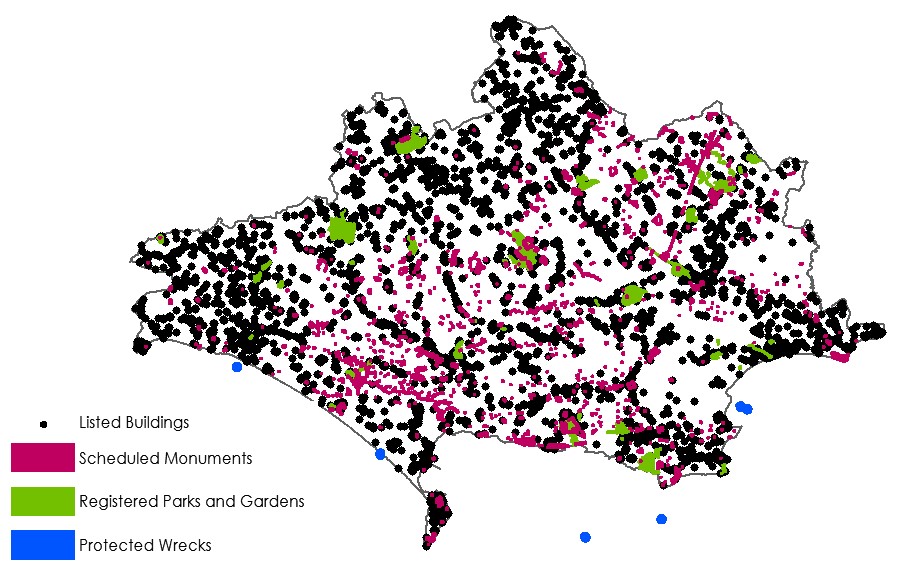Test Alert
British Summer is started !
Dorset’s rich historic environment has inspired important archaeological work and provided a backdrop for centuries of agriculture, industry, creative activity, everyday life, and death. Dorset has many ‘flagship’ monuments and excavations, and a wealth of historic buildings and finds which continue to inspire high quality research, and enormous public interest and enthusiasm.
The county’s historic environment is a finite and non-renewable resource which is important in its own right and makes a significant contribution to cultural activities and quality of life. It is used and enjoyed by many, but information about it should be made accessible to a wider range of people to enable them to participate in the understanding and protection of their heritage, and to inform decisions affecting it, now and in the future.
A heritage asset is a building, monument, site, place, area or landscape identified as having a degree of significance meriting consideration in planning decisions, because of its heritage interest. Heritage assets include designated heritage assets and assets identified by the local planning authority (including local listing).
Legislation provides specific protection for buildings and areas of special architectural or historic interest (Planning (Listed Buildings and Conservation Areas) Act 1990), monuments of national interest (Ancient Monuments and Archaeological Areas Act 1979), and wreck sites of archaeological, historic or artistic interest (Protection of Wrecks Act 1973). There is also provision for compilation of registers of parks and gardens and battlefields of special historic interest in the Historic Buildings and Ancient Monuments Act 1953.
An impression of the importance of Dorset’s historic environment can be gained by considering these statutory designations.
| Location | Listed Buildings | Scheduled Monuments | Registered Park and Gardens | Conservation Areas |
|---|---|---|---|---|
| England | 378,982 | 199,903 | 1,674 | 7,000 |
| BCP | 753 | 36 | 4 | 48 |
| Dorset Council | 9220 | 984 | 36 | 179 |
| Dorset total | 9973 | 1020 | 40 | 227 |
Figures given are the number of designations. Some may represent groups of buildings or monuments. Read more detail about designated heritage assets on the Historic England website.
Conservation areas - approximate numbers from the Historic England website.
Of 54 English Protected Wreck sites, 6 are off the coast of Dorset. There are no registered battlefields in the county.

The Heritage at Risk Register is published annually by Historic England and includes historic buildings and sites (including Conservation Areas) at risk of being lost through neglect, decay or deterioration. The register for 2019 contains 274 buildings and sites in Dorset:
| BCP | Dorset | Total | |
|---|---|---|---|
| Building and structure | 9 | 23 | 23 |
| Place of worship | 5 | 5 | 10 |
| Archaeology | 4 | 229 | 233 |
| Park and garden | 0 | 1 | 1 |
| Wreck | 0 | 0 | 0 |
| Conservation Area | 2 | 5 | 7 |
Read more about Heritage at Risk on the Historic England website
Non-designated heritage assets are buildings, monuments, sites, places, areas or landscapes identified by plan-making bodies as having a degree of heritage significance meriting consideration in planning decisions, but which do not meet the criteria for designated heritage assets. Though not designated, these heritage assets may still be of national importance. Others are of regional or local significance, and in Dorset some of these may already be in lists of local buildings and structures compiled by the former district, borough and unitary councils, or have been identified in local plans or conservation area appraisals. Other non-designated heritage assets will be archaeological monuments and areas; these are more numerous and our understanding of their nature and significance may change as more information is obtained about them, for example following assessment and evaluation as part of the planning process. Local planning authorities should ensure that up-to-date information about non-designated heritage assets is included in the local Historic Environment Record.
Significance is defined in the National Planning Policy Framework as ‘The value of a heritage asset to this and future generations because of its heritage interest. The interest may be archaeological, architectural, artistic or historic. Significance derives not only from a heritage asset’s physical presence, but also from its setting. The NPPF describes a framework for plan-making and decision-making in respect of applications for planning permission and listed building consent to ensure that heritage assets are conserved, and where appropriate enhanced, in a manner that is consistent with their significance and thereby achieving sustainable development.
An assessment of the significance of a heritage asset is a crucial part of plan-making and decision-making processes and should be included in the Historic Environment Record.
2 The Dorset Historic Environment Record in context